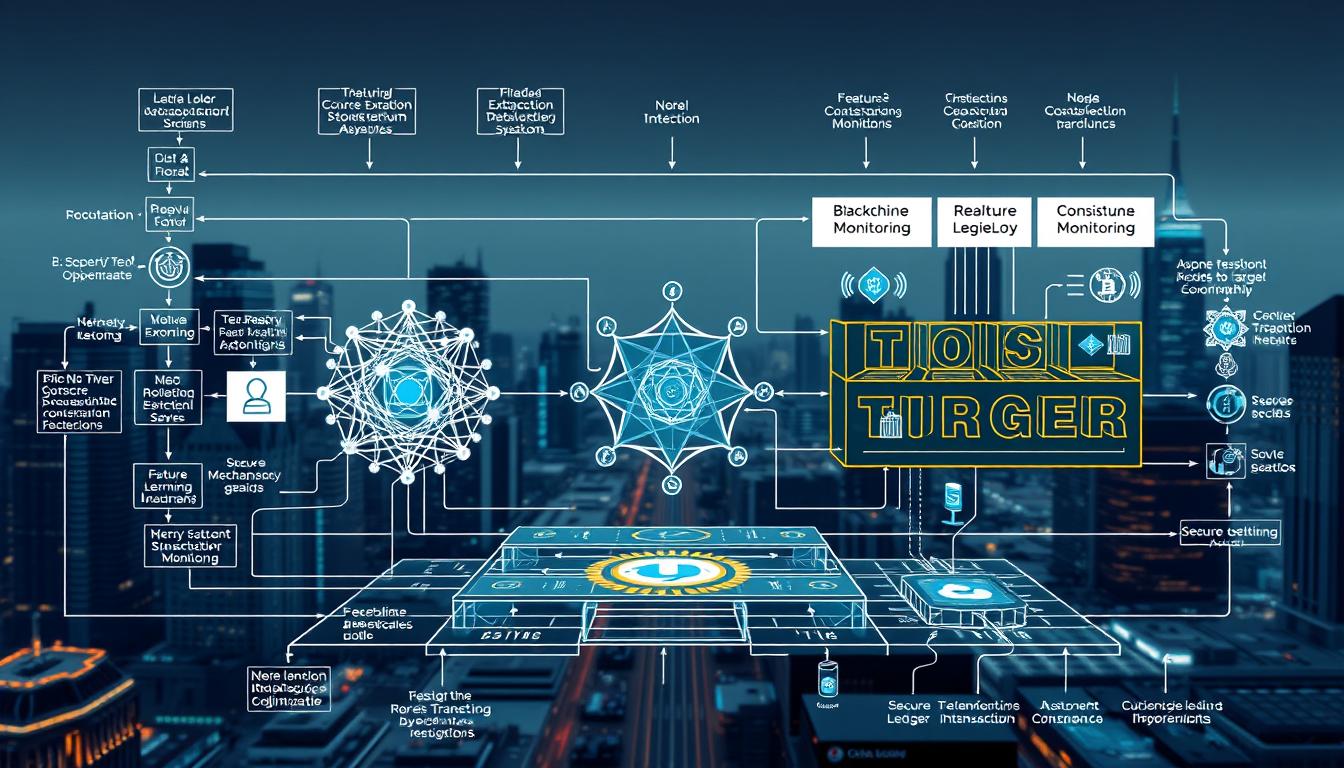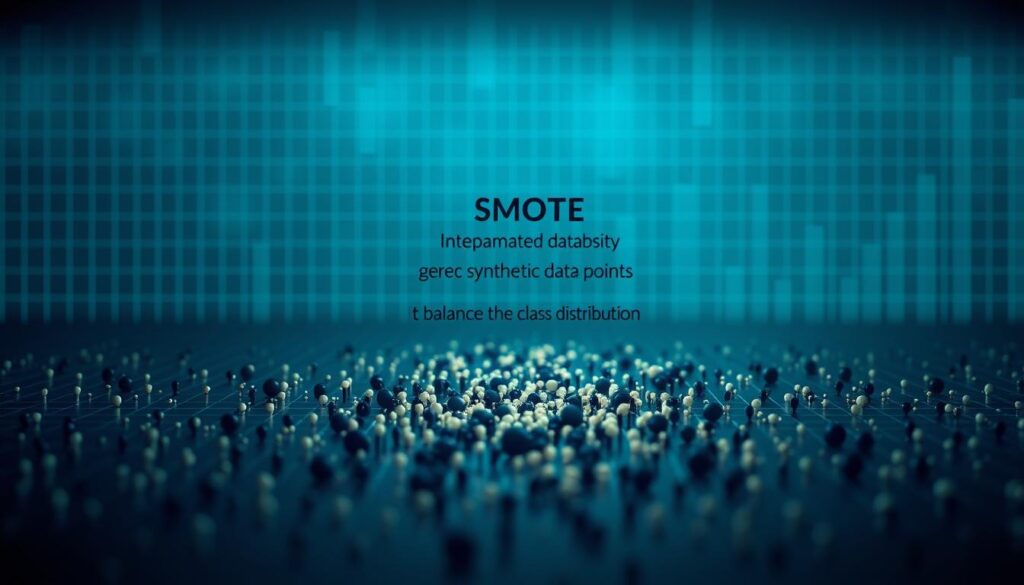Now Reading: Machine Learning Blockchain Fraud Detection: How It Works and Benefits
- 01
Machine Learning Blockchain Fraud Detection: How It Works and Benefits
Machine Learning Blockchain Fraud Detection: How It Works and Benefits

The digital age has brought incredible convenience to financial systems. Unfortunately, it has also opened new doors for criminal activity. Losses from online payment fraud reached a staggering $41 billion globally in 2022.
This alarming trend demands equally advanced solutions. The convergence of machine learning and blockchain technology offers a powerful answer. These systems work together to secure digital transactions.
Blockchain provides a secure, unchangeable ledger for all activity. This creates a rich source of trustworthy data. Sophisticated algorithms can then analyze this information for unusual patterns.
The immutable nature of the blockchain makes it extremely difficult to alter past transactions. This integrity is crucial for accurate analysis. It ensures the data used for detection is reliable.
This guide will explore how machine learning models are deployed to identify and prevent fraud. We will examine the specific techniques used for anomaly detection and pattern recognition in financial transactions. You will gain a clear understanding of the practical applications and future potential of this combined technological approach.
Key Takeaways
- Financial fraud is a multi-billion dollar problem that requires modern technological solutions.
- The combination of machine learning and blockchain creates a highly secure framework for transaction analysis.
- Blockchain’s immutable ledger provides a trusted data source for accurate fraud detection.
- Advanced algorithms can identify subtle, complex patterns indicative of fraudulent activity.
- This integrated approach can adapt to new threats in real time, offering dynamic protection.
- Understanding this technology is key for securing various payment methods, from e-commerce to cryptocurrencies.
Introduction to Blockchain and Fraud Detection
Financial technology advancements create both opportunities and risks. Digital payment systems handle enormous volumes of transactions daily. This expansion brings sophisticated security challenges.
Overview of Emerging Threats
New dangers target digital financial systems. Criminals exploit weaknesses in both centralized and decentralized networks. These include:
- Double-spending attacks in cryptocurrency systems
- Phishing schemes targeting digital wallet credentials
- Ransomware demanding untraceable currency payments
As transaction numbers grow, so does financial fraud. Billions are lost annually to these crimes.
Importance of Data Integrity in Digital Transactions
Data integrity forms the foundation of secure financial systems. Compromised information leads to unauthorized fund transfers. It can also manipulate transaction records.
Blockchain technology addresses these vulnerabilities. Its distributed ledger timestamps all records permanently. This creates trustworthy data for analysis.
The immutable nature of this technology ensures record accuracy. This reliability is crucial for effective threat identification.
The Evolution of Fraud in Financial Systems
Financial crime has continuously transformed alongside technological progress in banking systems. Early digital payment methods faced simple security breaches. These included password theft and basic phishing schemes.
As online banking expanded, criminals developed more sophisticated approaches. They began combining technical exploits with social engineering tactics. This created multi-layered attacks that were harder to detect.
Historical Perspective on E-Banking Attacks
Traditional credit card protection used rule-based systems. These methods flagged suspicious activity based on fixed thresholds. However, they produced many false alarms and couldn’t adapt to new threat patterns.
Bitcoin’s emergence in 2008 introduced unique security challenges. The absence of central verification created double-spending risks. Users could potentially spend the same digital currency twice.
A significant theft case called “all in vain” demonstrated these vulnerabilities. Hackers stole approximately 25,000 bitcoins through sophisticated methods. This showed that distributed systems need advanced protective measures.
Researchers face ongoing obstacles in developing better security systems. Banks hesitate to share real-time transaction information due to privacy concerns. This data limitation hinders the creation of more effective detection tools.
The constant adaptation between security measures and criminal methods drives innovation. Understanding this historical context helps appreciate modern protective technologies.
Blockchain Technology: Security and Transparency
Cryptographic ledger systems offer a revolutionary framework for maintaining transaction integrity without centralized control. This technology fundamentally changes how financial data is stored and verified across networks.
The distributed architecture eliminates single points of failure that plague traditional systems. Each participant maintains a complete copy of the ledger, creating robust blockchain networks resistant to tampering.
Once recorded, transactions become permanent through cryptographic hashing. This immutability provides an undeniable audit trail for all financial operations. The system’s transparency allows network participants to verify blockchain data independently.
Consensus mechanisms like Proof of Work validate each new entry before acceptance. These algorithms ensure only legitimate transactions enter the permanent record. This creates a trustless environment where intermediaries become unnecessary.
Organizations worldwide deploy these technologies to protect auditing systems. The cryptographic security features maintain data integrity against unauthorized access. However, sophisticated attackers can still exploit implementation weaknesses.
Using blockchain for financial monitoring presents unique analytical challenges. The graph-like structure of blockchain data requires specialized approaches for pattern detection. Despite pseudonymous addressing, transaction histories aid investigative efforts.
Role of Machine Learning in Modern Fraud Prevention
The fight against financial crime now relies heavily on adaptive computational systems. These intelligent algorithms analyze vast amounts of transactional information to identify suspicious activity. Their ability to learn from new data makes them exceptionally powerful.
Supervised, Unsupervised, and Reinforcement Learning Applications
Different approaches tackle the problem in unique ways. Supervised methods use historical records labeled as legitimate or suspicious. They learn to classify new transactions based on these past examples.
Unsupervised techniques are crucial for finding novel threats. They search for outliers and unusual patterns without pre-defined labels. This helps catch schemes that have never been seen before.
Reinforcement systems continuously improve through feedback. They adjust their strategies to maximize correct identifications. This creates a dynamic defense that gets smarter over time.
Real-Time Anomaly Detection Techniques
Speed is essential for effective protection. Real-time analysis scrutinizes payments as they happen. Algorithms compare each transaction against established behavioral baselines.
Deviations like unusual amounts or locations trigger immediate alerts. This instant response is critical for stopping losses before they occur. The system’s adaptability allows it to counter emerging threats effectively.
Machine Learning Blockchain Fraud Detection: Core Concepts
Understanding the fundamental concepts behind this technology integration is essential for grasping its full potential. This combined approach merges algorithmic pattern recognition with distributed ledger security.
The system creates robust frameworks that address both established and emerging threats. It leverages inherent security features like immutability and transparency.
Key Definitions and Terminology
Several critical terms define how these systems operate. Nodes represent individual transactions or addresses within networks. Edges show connections representing value flows between entities.
Transaction attributes become features for analysis. These include amount, timestamp, and frequency data. Systems assign labels classifying activity as legitimate or suspicious.
Various attack vectors threaten digital financial systems. These include double-spending attempts and Sybil attacks. Mixing services and wallet compromises also present significant risks.
Specialized architectures process graph-structured data effectively. Relationships between entities prove as important as individual transaction attributes. This requires moving beyond traditional tabular data approaches.
The detection process involves multiple stages. Feature extraction comes first, followed by model training. Real-time classification and continuous updating maintain accuracy against evolving tactics.
Performance metrics include precision and recall measurements. The Area Under the Curve metric evaluates overall model effectiveness. These tools help assess system reliability across different classification thresholds.
Data Balancing Techniques and SMOTE Integration
When developing security systems, analysts frequently encounter a fundamental obstacle: the overwhelming prevalence of normal transactions compared to rare malicious events. This imbalance creates significant challenges for automated monitoring solutions.

The natural distribution of activities in financial networks heavily favors legitimate operations. This skewed class distribution can undermine the effectiveness of security algorithms.
Addressing Imbalanced Class Distributions
Highly imbalanced datasets present a unique challenge for predictive models. When one category dominates the dataset, algorithms tend to favor the majority class. This bias leads to poor performance in identifying rare but critical events.
Traditional approaches often fail with uneven data distributions. Models achieve misleadingly high accuracy by simply classifying everything as normal. They miss the subtle patterns that indicate actual threats.
Impact on Model Accuracy and Fraud Detection
SMOTE (Synthetic Minority Over-sampling Technique) revolutionizes how we handle uneven data. Instead of duplicating existing examples, it creates new synthetic samples for underrepresented categories.
The technique identifies patterns within the minority group. It then generates realistic variations that maintain the essential characteristics. This approach prevents overfitting while improving detection capabilities.
| Technique | Approach | Advantages | Limitations |
|---|---|---|---|
| Random Oversampling | Duplicate minority samples | Simple implementation | High overfitting risk |
| Random Undersampling | Remove majority samples | Balances dataset quickly | Loss of valuable data |
| SMOTE | Synthetic sample generation | No information loss | Computationally intensive |
| Cost-Sensitive Learning | Weighted misclassification | No data modification | Complex parameter tuning |
Proper data balancing dramatically improves model performance. Systems become more sensitive to unusual patterns while maintaining accuracy across all transaction types.
Integration of Machine Learning Models in Fraud Detection
The implementation of intelligent classification systems marks a significant advancement in financial security. These systems analyze payment patterns to identify unauthorized activities with remarkable accuracy.
Sophisticated algorithms now provide robust protection against evolving threats. They process vast amounts of transactional information to detect subtle anomalies.
Random Forest and XGBoost Applications
Random Forest operates as an ensemble method that builds multiple decision trees. This approach reduces overfitting and improves generalization compared to single-tree models.
XGBoost represents an optimized gradient boosting framework. It constructs trees sequentially, with each new tree correcting errors from previous ones.
Both algorithms excel at handling complex feature spaces common in financial data. They automatically identify the most relevant attributes for classification.
| Algorithm | Approach | Strengths | Best Use Cases |
|---|---|---|---|
| Random Forest | Parallel tree building | Reduced overfitting, handles missing values | Large datasets, real-time classification |
| XGBoost | Sequential tree building | High accuracy, efficient memory usage | Complex patterns, performance optimization |
These classification systems have demonstrated superior performance in various financial applications. They achieve higher accuracy rates while reducing false alarms that increase operational costs.
The integration creates a hybrid framework where transactions are recorded securely while algorithms classify them in real time. Continuous retraining maintains accuracy against emerging threats.
Advanced Analytics: Graph Neural Networks and Ensemble Methods
Modern financial security systems have evolved beyond traditional approaches. They now incorporate sophisticated graph-based architectures that analyze relational patterns in transaction networks.

These advanced systems process financial information as interconnected graphs rather than isolated records. This approach captures complex relationships that simpler methods often miss.
GCN, GAT, and GIN Model Insights
Graph Convolutional Networks excel at analyzing local neighborhood patterns. They aggregate information from connected nodes to build comprehensive profiles.
Attention-based architectures introduce weighted importance to different connections. This selective focus helps identify the most relevant patterns for classification tasks.
Isomorphism testing approaches distinguish subtle structural differences in network layouts. They detect unique topological signatures that characterize suspicious activity clusters.
Ensemble frameworks combine these complementary strengths through sophisticated voting systems. The integrated approach achieves superior performance compared to individual architectures.
Real-world testing demonstrates practical effectiveness with high recall rates and minimal false alarms. This makes the technology suitable for real-time monitoring applications across various financial platforms.
System Architecture: Combining Blockchain with ML Algorithms
A sophisticated two-layer architecture forms the backbone of modern financial security platforms. This design merges distributed ledger technology with analytical capabilities for comprehensive protection.
The first layer handles transaction initiation and validation through cryptographic protocols. It creates an immutable record of all payment activities. This provides a trustworthy foundation for subsequent analysis.
The second layer performs real-time classification using advanced algorithms. These systems evaluate transaction patterns as they occur. Suspicious activities receive immediate attention before final confirmation.
Smart contracts automate the screening process through embedded analytical components. They can flag, delay, or reject payments based on risk assessments. This integration creates a seamless protective framework.
| Architectural Component | Primary Function | Security Features | Analytical Capabilities |
|---|---|---|---|
| Blockchain Layer | Transaction validation | Immutable records | Basic pattern tracking |
| ML Integration Layer | Risk classification | Anomaly identification | Real-time scoring |
| Smart Contract Interface | Automated screening | Rule enforcement | Decision automation |
| Security Module | Attack simulation | Vulnerability testing | Threat modeling |
Binary classification categorizes payments as legitimate or malicious. More advanced implementations use probability scoring for nuanced assessments. This approach balances security with operational efficiency.
The modular design supports continuous improvement without major overhauls. Analytical models can be updated as new threat patterns emerge. This flexibility ensures long-term effectiveness against evolving risks.
Case Studies on Bitcoin and Financial Transactions
Real-world applications provide the ultimate test for any security technology. Documented implementations reveal both strengths and limitations of analytical systems.

Researchers have extensively studied cryptocurrency payment networks to evaluate protective measures. These investigations use substantial historical records to train classification systems.
Real-World Application Examples
One significant investigation utilized a Kaggle dataset containing 30,000 payment records. This collection featured 11 distinct attributes including transaction degrees and mean values.
The analysis demonstrated how advanced algorithms achieve impressive classification accuracy. Systems identified suspicious patterns with remarkable precision across diverse scenarios.
Another benchmark study employed the Elliptic dataset spanning 49 time intervals. This comprehensive collection included over 200,000 connected payment flows between 2013 and 2017.
Cryptocurrency networks present unique analytical challenges. Single users often control multiple addresses, creating complex relationship patterns.
| Dataset | Transaction Count | Time Period | Key Features |
|---|---|---|---|
| Kaggle Bitcoin | 30,000 samples | Bitcoin creation-present | 11 attributes, degree analysis |
| Elliptic Benchmark | 203,769 transactions | 2013-2017 (49 intervals) | Temporal flow, labeled examples |
Practical deployments face significant operational hurdles. Processing millions of records requires substantial computational resources.
Real-time analysis demands careful balancing between thorough examination and system responsiveness. These case studies highlight the ongoing evolution of protective technologies.
Insights from International Conferences and Research
Global academic gatherings serve as vital hubs for sharing breakthroughs in digital security. Major international conference events, including those hosted by IEEE and ACM, regularly showcase cutting-edge research.
These forums provide detailed comparative analysis of different algorithmic strategies. They highlight which methods work best under various conditions.
Prestigious journals like IEEE Access publish comprehensive studies from the computer science community. These papers offer empirical proof of how various techniques perform.
The field has advanced through novel system designs. These include graph-based networks and federated approaches that protect data privacy.
Studies consistently show that combined methods, like Random Forest and XGBoost used together, deliver superior performance. They achieve higher accuracy and better identify rare events.
| Conference / Journal | Primary Focus | Key Contribution |
|---|---|---|
| IEEE International Conference | Methodology Comparison | Standardized Evaluation Frameworks |
| ACM CCS | Architectural Innovation | Novel Graph-Based Models |
| IEEE Access Journal | Empirical Validation | Performance Metrics on Benchmark Data |
The academic focus is shifting beyond pure accuracy. Researchers now prioritize practical factors like processing speed and long-term adaptability to new threats.
Quantum-Ready Strategies for Future Fraud Detection
The integration of quantum principles into existing security architectures represents a paradigm shift in threat prevention. These forward-looking approaches prepare current systems for seamless integration with emerging quantum technologies.

Modular designs allow classical systems to operate effectively while maintaining interfaces for future quantum components. This ensures smooth transitions as hardware capabilities advance.
Incorporating Quantum Randomness in Model Initialization
Quantum random number generators provide true randomness derived from quantum mechanical processes. They replace pseudo-random algorithms for weight initialization and ensemble sampling.
This approach ensures information-theoretic unpredictability that adversaries cannot replicate. Ensemble weights drawn from quantum uniform distributions create stronger foundations for anomaly detection.
Embedding Quantum Feature Maps in ML Models
Quantum feature maps transform classical transaction data into quantum states residing in exponentially larger Hilbert spaces. This enables representation of complex relationships that classical approaches cannot capture.
A transaction vector containing attributes like amount and frequency encodes into n-qubit quantum states. The quantum representation space grows exponentially compared to original dimensional spaces.
These quantum-enhanced systems promise improved scalability through quantum parallelism. They also offer increased resistance to adversarial attacks and reveal patterns invisible to classical machine learning methods.
Risk Assessment Framework and Anomaly Detection Methods
Financial institutions deploy comprehensive scoring systems to evaluate transaction legitimacy. These frameworks analyze multiple dimensions to identify suspicious activities.
Advanced systems examine behavioral patterns and network connections. They also review temporal sequences and statistical deviations. This multi-angle approach provides thorough protection.
Unusual payment activities trigger immediate alerts. Large transfers or rapid transaction sequences receive special attention. Connections to known malicious addresses raise red flags.
Quantitative scoring assigns numerical values to each transaction. Factors include amount, location, and frequency data. Historical behavior profiles contribute to final risk assessments.
| Detection Method | Primary Function | Strengths | Best Applications |
|---|---|---|---|
| Statistical Analysis | Deviation identification | Quick processing, established patterns | Real-time monitoring, basic anomalies |
| Isolation Forests | Novel pattern discovery | Unsupervised learning, new threats | Emerging fraud patterns, zero-day attacks |
| One-Class SVM | Boundary establishment | Clear thresholds, outlier detection | Network intrusion, compromised accounts |
| Autoencoder Networks | Normal pattern learning | Complex relationships, deep learning | Sophisticated attacks, multi-dimensional analysis |
Higher risk scores activate escalated review protocols. These range from automated holds to manual investigation. Resources focus on highest-probability cases for maximum efficiency.
Combined approaches deliver superior accuracy. Ensemble configurations integrate complementary signals. This creates robust protection against diverse threats.
Fraud Prevention in E-Payments and Digital Commerce
The expansion of payment options creates new security challenges that need specialized solutions. Different transaction environments require tailored approaches to protect against unauthorized activities.
Application in In-Person, Mobile, and Ecommerce Scenarios
Physical payment terminals use advanced algorithms to analyze transaction patterns. These systems examine location, time, and purchase amounts to identify suspicious activities. Real-time flagging prevents geographically impossible transactions.
Mobile payment platforms employ device fingerprinting techniques. They create unique identifiers based on hardware and software characteristics. This helps detect account takeover attempts and suspicious device connections.
Behavioral analysis adds another layer of security for digital payments. Systems monitor user interaction patterns like typing rhythm and navigation habits. These subtle behaviors are difficult for unauthorized users to replicate accurately.
E-commerce platforms focus on login pattern monitoring and purchase history analysis. They identify unusual account access and detect false chargeback claims. Comprehensive customer profiles help spot sophisticated multi-channel schemes.
Integrated approaches combine data from various payment methods. This creates complete user behavior profiles for more accurate threat identification. Cross-channel analysis provides stronger protection against evolving risks.
Leveraging Machine Learning for Enhanced Security
Privacy-focused security frameworks represent the next frontier in digital asset protection. These advanced systems go beyond traditional threat identification to provide comprehensive security coverage.
Federated learning enables collaborative model training across institutions without sharing sensitive data. This approach maintains confidentiality while improving collective security intelligence.
Encryption techniques play a crucial role in privacy preservation. Homomorphic encryption allows computations on encrypted information, though it requires significant computational resources. This technology enables security analysis without exposing raw transaction details.
Deep learning algorithms integrated with distributed ledger technology create robust intrusion detection systems. These frameworks monitor network traffic and identify attack patterns automatically. The combination provides enhanced protection for distributed financial networks.
Bidirectional Long Short-Term Memory networks analyze temporal sequences to detect evolving threats. This temporal analysis capability identifies patterns that unfold across multiple transactions over time.
These advanced security applications extend to AI-powered crypto wallets and other digital asset protection systems. They balance transparency requirements with strict confidentiality mandates from regulations like GDPR.
The future of financial security lies in adaptive systems that learn from new threats while preserving user privacy. This approach creates sustainable protection frameworks for evolving digital economies.
Conclusion
Organizations worldwide are adopting sophisticated analytical frameworks that merge algorithmic intelligence with cryptographic security. This integration represents a transformative approach to protecting digital payments.
The combination of distributed ledger immutability with adaptive pattern recognition has proven remarkably effective. Systems achieve high accuracy rates while minimizing false alarms across millions of transactions.
Real-world implementations validate the practical viability of these approaches. As demonstrated in comprehensive research studies, these systems successfully process blockchain data at scale.
Future developments will enhance capabilities through quantum-ready designs and federated learning. Financial institutions must balance detection accuracy with operational efficiency.
Adopting advanced fraud detection technologies is essential for maintaining trust in digital financial systems. These solutions provide sustainable protection against evolving threats.
FAQ
What is the primary advantage of combining blockchain with advanced analytics for security?
The main benefit is creating a highly secure and transparent system. The distributed ledger ensures data integrity, while analytical models, like those discussed at the IEEE International Conference, provide real-time anomaly detection for suspicious activity.
How do systems handle the challenge of highly imbalanced datasets in financial security?
Techniques like SMOTE (Synthetic Minority Over-sampling Technique) are crucial. They address skewed class distribution by generating synthetic examples of the minority class, which significantly improves a model’s ability to identify rare events, such as a fraudulent transaction.
Which analytical models are most effective for analyzing transaction patterns?
Models like Random Forest and XGBoost are widely used for their robustness. For more complex relational data, Graph Neural Networks (GCN, GAT) excel at mapping connections between entities on a network, uncovering sophisticated schemes that simpler models might miss.
Can these systems operate in real-time for payments and e-commerce?
Yes, modern architectures are designed for low-latency operation. They can instantly screen in-person, mobile, and online payments. This real-time capability is vital for preventing losses and maintaining user trust in digital commerce platforms.
What role does quantum-ready technology play in future-proofing these systems?
Researchers are exploring strategies like using quantum-based random number generation for model initialization. This enhances unpredictability and strengthens cryptographic elements, preparing defenses against next-generation computational threats.
How is privacy preserved when using these powerful detection methods?
A> Privacy preservation is a key design principle. Techniques often involve analyzing encrypted data or using feature sets that do not require exposing sensitive personal information. This balance between security and user privacy is a central topic in computer science research.














